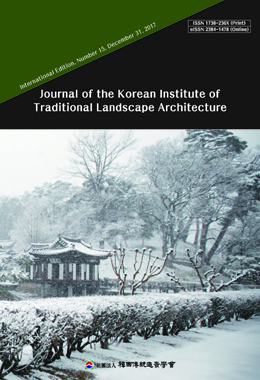이탈리아의 대표적인 건축가인 카를로 스카르파(Carlo Scarpa)는 주로 건축물의 리모델링, 전시관, 박물관 등의 작품으로 유명하지만, 20세기 모더니즘 시대의 많은 정원과 외부공간을 설계하였다. 그는 조경사적으로도 가치있는 근대적 조경 설계작품을 남겼음에도 불구하고 그의 정원 작품들은 최근까지 많은 주목을 받지 못하였다. 본 연구는 스카르파의 대표적인 정원작품인 꾸에리니 스탐빨리아(Querini Stampalia) 정원의 분석을 통하여 그의 디자인 철학 및 정원특징, 역사적 의의를 재조명하고자 하였다. 그는 정원에는 베니스의 역사 및 지역특성들이 상징적으로 투영되었을 뿐 아니라 지역재료와 현대적 재료의 수공예적인 세심한 디테일이 다양하게 표현되었다. 또한, 통일성 있는 재료사용 및 시각적 개방을 통한 건물 내외부의 유기적 연결, 이슬람 및 일본 정원 문화의 영향을 엿볼수 있는 조경요소 등이 스카르파 정원의 특징이다. 그의 정원 설계기법은 역사 및 지역적 고유성을 유지하며 오늘날의 방식으로 재해석하는 데 있어 많은 교훈이 되고 있으며 베니스를 대표하는 모더니즘 정원으로서의 가치를 인정받고 있다.
Carlo Scarpa is an Italian designer who is renowned worldwide for his remodeling of buildings, exhibitions and museums. Scarpa designed more gardens and outdoor spaces than buildings, and he has left important modern landscaping works. His works in garden design, however, have not received much attention until recently. This study sought to examine his design philosophy, garden characteristics, and historical significance of his gardens by analyzing the garden of Querini Stampalia in Venice. His garden symbolically reflects the historical and regional characteristics of Venice, and the handcraft detailing of local materials has been expressed in various ways. The interrelation between the garden and interior of building is achieved through the use of unified materials and openness of glass door. In addition, the influences of Islamic and Japanese garden culture are reflected in the garden. The small enclosed garden has become the icon of a modern garden in Venice with a wealth of details and respect for craftsmanship.




